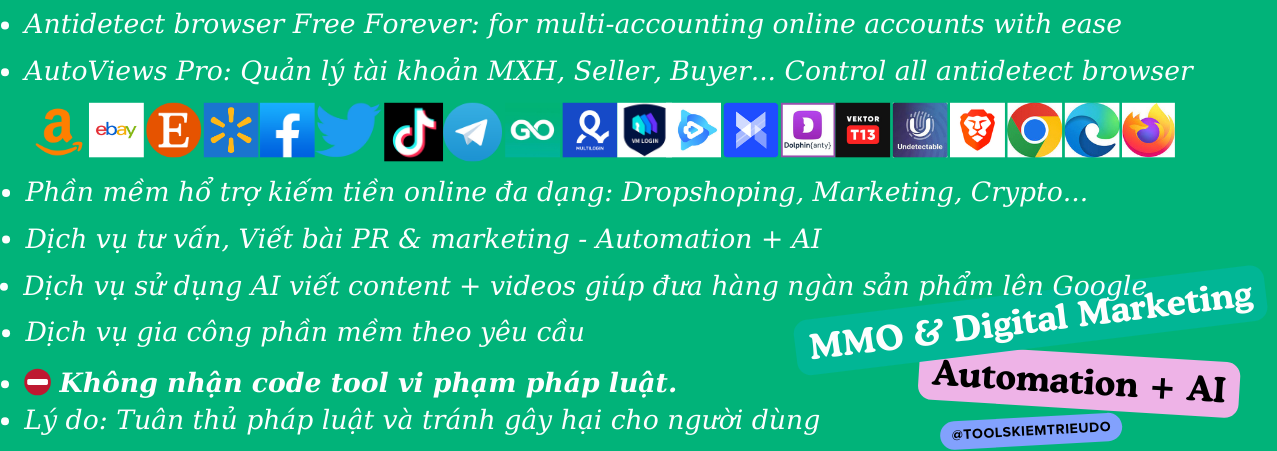An toàn trực tuyến
Vietnamese
Trong thời đại công nghệ thông tin phát triển như hiện nay, internet đã trở thành một phần không thể thiếu trong cuộc sống của chúng ta. Tuy nhiên, bên cạnh những lợi ích, internet cũng tiềm ẩn nhiều rủi ro, đặc biệt là đối với trẻ em.
Các mối đe dọa an toàn trực tuyến
Có rất nhiều mối đe dọa an toàn trực tuyến, bao gồm:
Bắt nạt trực tuyến: Bắt nạt trực tuyến là hành vi sử dụng internet để đe dọa, xúc phạm, lăng mạ hoặc quấy rối người khác. Bắt nạt trực tuyến có thể gây ra những tổn thương tâm lý nghiêm trọng cho nạn nhân.
Mạo danh: Mạo danh là hành vi sử dụng thông tin giả mạo để giả làm người khác trên internet. Mạo danh có thể được sử dụng để lừa đảo, chiếm đoạt tài sản hoặc xâm hại tình dục trẻ em.
Tội phạm mạng: Tội phạm mạng là hành vi sử dụng internet để thực hiện các hành vi phạm tội, như ăn cắp thông tin cá nhân, phát tán virus hoặc tấn công mạng.
Cách bảo vệ an toàn trực tuyến
Để bảo vệ an toàn trực tuyến, chúng ta cần thực hiện các biện pháp sau:
Đặt mật khẩu mạnh: Mật khẩu mạnh là mật khẩu có ít nhất 8 ký tự, bao gồm chữ cái, số và ký tự đặc biệt.
Cập nhật phần mềm thường xuyên: Các nhà sản xuất phần mềm thường xuyên phát hành các bản cập nhật để vá các lỗ hổng bảo mật.
Không chia sẻ thông tin cá nhân: Không chia sẻ thông tin cá nhân, như địa chỉ, số điện thoại hoặc email với người lạ.
Cẩn thận khi tải xuống tệp từ internet: Chỉ tải xuống tệp từ các nguồn uy tín.
Giữ trẻ em an toàn trực tuyến: Theo dõi hoạt động trực tuyến của trẻ và dạy trẻ về các mối đe dọa an toàn trực tuyến.
Kết luận
An toàn trực tuyến là vấn đề quan trọng đối với tất cả mọi người. Bằng cách thực hiện các biện pháp bảo vệ an toàn trực tuyến, chúng ta có thể giúp bảo vệ bản thân và gia đình khỏi những rủi ro trên internet.
English
Online safety
In the age of information technology, the internet has become an indispensable part of our lives. However, alongside the benefits, the internet also poses many risks, especially for children.
Online safety threats
There are many online safety threats, including:
Cyberbullying: Cyberbullying is the use of the internet to threaten, insult, humiliate, or harass others. Cyberbullying can cause serious psychological harm to victims.
Impersonation: Impersonation is the use of false information to impersonate someone else on the internet. Impersonation can be used to scam, steal personal information, or sexually abuse children.
Cybercrime: Cybercrime is the use of the internet to commit crimes, such as stealing personal information, spreading viruses, or attacking networks.
How to protect online safety
To protect online safety, we need to take the following measures:
Set a strong password: A strong password is a password with at least 8 characters, including letters, numbers, and special characters.
Update software regularly: Software manufacturers regularly release updates to patch security vulnerabilities.
Don’t share personal information: Don’t share personal information, such as address, phone number, or email with strangers.
Be careful when downloading files from the internet: Only download files from reputable sources.
Keep children safe online: Monitor children’s online activity and teach them about online safety threats.
Conclusion
Online safety is an important issue for everyone. By taking online safety measures, we can help protect ourselves and our families from the risks on the internet.
Additional tips for online safety
Use a firewall and antivirus software: A firewall can help protect your computer from unauthorized access, and antivirus software can help protect your computer from viruses and other malware.
Be careful about what you click on: Don’t click on links or open attachments from people you don’t know.
Be aware of phishing scams: Phishing scams are emails or websites that are designed to trick you into revealing your personal information.
Report any suspicious activity to the authorities: If you see something that looks suspicious, report it to the authorities.
By following these tips, you can help protect yourself and your family from the risks on the internet.




